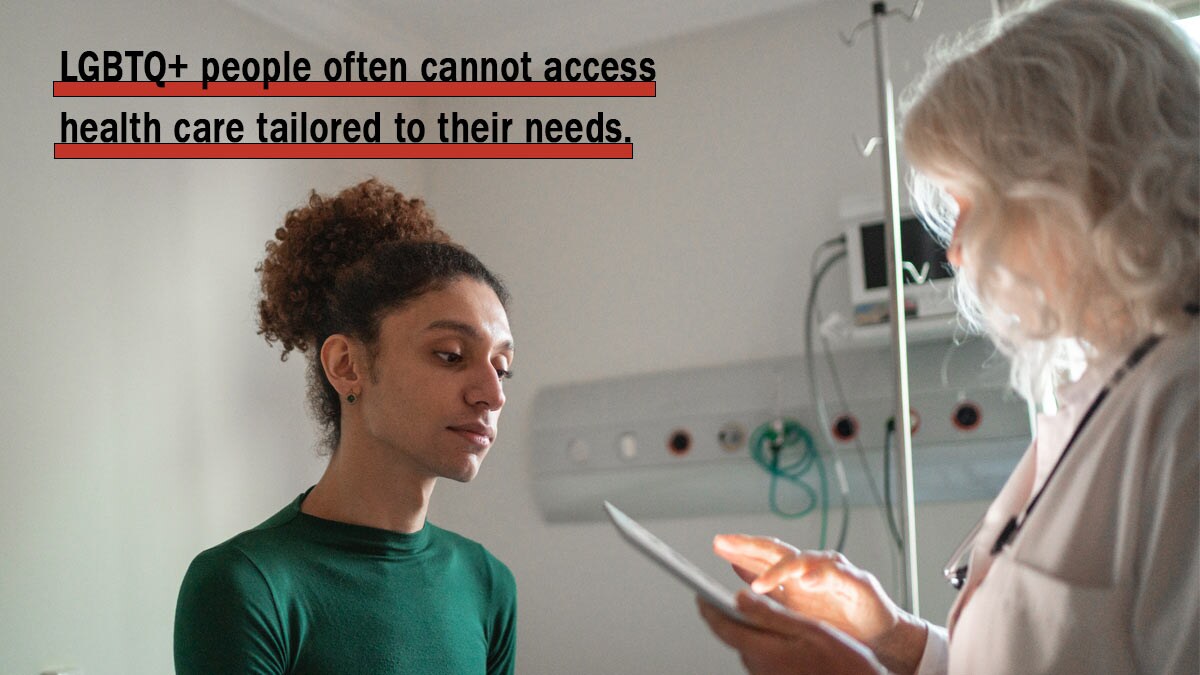At a glance
- Most people who smoke want to quit, and more than half of them try to do so each year.
- Connecting every person who wants to quit with treatment proven to help them quit for good is important for improving people's health.
- Descriptions of strategies that states and communities can use to help people quit smoking are below.
Barriers to quitting
Most people who smoke want to quit, and more than half try to do so each year.1 Proven treatments make it more likely that people will quit smoking successfully. These treatments include behavioral counseling and medicines approved by the U.S. Food and Drug Administration (FDA). LGBTQ+ people who smoke often run into barriers when trying to find and use these treatments. For example:
- In a study of smoking adults in one state, lesbian, gay, and bisexual adults who were aware of their state quitline were less likely to report an intention to call the quitline than their heterosexual counterparts.2
- In 2015, fewer gay, lesbian, and bisexual adults who smoked reported using counseling and/or FDA-approved medicines to help them quit than straight adults who smoked (14.5% vs 31.7%).3
- LGBTQ+ people often fear or experience discrimination or disrespect from medical professionals. People who are afraid of discrimination from doctors and other health workers are less likely to seek medical care, including preventive screenings.
- LGBTQ+ people may rank tobacco use as a lower health priority than other issues that affect the LGBTQ+ community (such as HIV/AIDS, hate crimes, suicide).

What states and communities can do
Provide barrier-free, widely promoted coverage for all evidence-based cessation treatments by all types of health insurance
As of 2018, only 15 state Medicaid programs fully covered tobacco cessation (quitting) services for all enrollees of traditional Medicaid.4
Increase access to culturally tailored cessation services
When it comes to health issues, one size does not fit all. Different people and communities have different needs and make decisions in different ways. For example, some LGBTQ+ people may think of smoking as a way of rebelling against traditional roles. Tailored cessation resources and improved access to these resources could be helpful. For example, these resources could address some experiences and stressors associated with smoking that may be unique to LGBTQ+ people.
Share health messages that feature LGBTQ+ people and their experiences
Mass media campaigns are proven to increase smoking cessation, prevent tobacco use initiation, and reduce the prevalence of tobacco use.56 However, anti-smoking messages rarely appear in media designed for LGBTQ+ people. Anti-commercial tobacco messaging and mass media campaigns can feature testimonials from LGBTQ+ people.A CDC's Tips From Former Smokers® (Tips®) is one example of a campaign that has done this. Educational and outreach campaigns should consistently include and reach out to LGBTQ+ people.
- "Commercial tobacco" means harmful products that are made and sold by tobacco companies. It does not include "traditional tobacco" used by Indigenous groups for religious or ceremonial purposes.
- Gentzke AS, Wang TW, Cornelius M, et al. Tobacco Product Use and Associated Factors Among Middle and High School Students — National Youth Tobacco Survey, United States, 2021. MMWR Surveill Summ. 2022; 71(5):1–29.
- Burns EK, Deaton EA, Levinson AH. Rates and reasons: disparities in low intentions to use a state smoking cessation quitline. Am J Health Promot. 2011;25(5 Suppl):S59–S65.
- Babb S, Malarcher A, Schauer G, Asman K, Jamal A. Quitting Smoking Among Adults—United States, 2000–2015. MMWR Morb Mortal Wkly Rep. 2017;65(52):1457–1464.
- DiGiulio A, Jump Z, Babb S, et al. State Medicaid Coverage for Tobacco Cessation Treatments and Barriers to Accessing Treatments — United States, 2008–2018. MMWR Morb Mortal Wkly Rep. 2020;69(6):155–160.
- U.S. Dept of Health and Human Services. The Health Consequences of Smoking: 50 Years of Progress. A Report of the Surgeon General. U.S. Dept of Health and Human Services, 2014. Accessed March 1, 2022. https://pubmed.ncbi.nlm.nih.gov/24455788/
- U.S. Dept of Health and Human Services. Smoking Cessation: A Report of the Surgeon General. Centers for Disease Control and Prevention, 2020. Accessed March 1, 2022. https://www.hhs.gov/sites/default/files/2020-cessation-sgr-full-report.pdf
